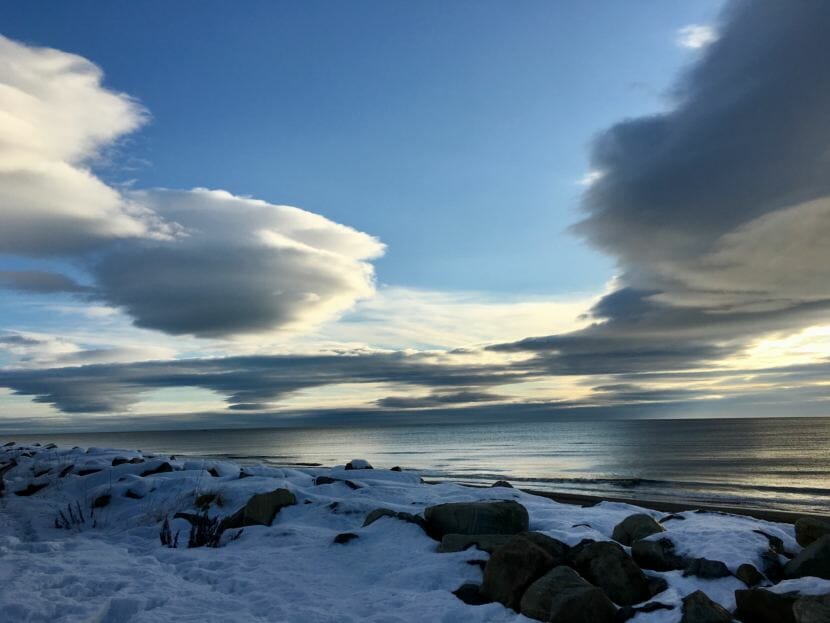
During the week of Thanksgiving this year, Northwest Alaska communities were inundated with heavy wind storms that affected travel and caused infrastructure damage. Over time, these kinds of storms could subject coastal communities to flooding and erosion.
Historically, Arctic communities have had thick layers of sea ice to help buffer those storms, but that protection is disappearing.
As the Arctic has warmed over the last several decades, due to climate change, average temperatures have increased and shrinking sea ice — typically used for travel and hunting — has become less reliable. New research suggests that the change in climate is also affecting wind storms.
“We do see that, with the change in climate, some types of wind events may be becoming more or less likely,” said Sarah Pearl. Pearl is a Dartmouth College undergraduate student who has been researching wind storms with the International Arctic Research Center at the University of Alaska Fairbanks.
Northern coastal communities like Nome, Kotzebue and Utqiagvik saw heavy wind storms last month — with wind speeds between 30 to 40 miles per hour, or higher.
In a study published in October, Pearl and other researchers project that these heavy wind storms will increase along Northwest Alaska. She says that could have major repercussions.
“Based on the direction of the wind, there may be onshore flooding,” Pearl said. “There can also be coastal erosion, which is also related to sea ice extent which we know is also changing.”
John Walsh is the chief scientist with the Arctic Research Center. He says that historically, sea ice in coastal communities worked effectively to minimize the effects of high-wind storms.
“It essentially acts as a lid on the ocean,” Walsh said. “So that the waves cannot build up to the height they normally would. And when you get the flooding and the erosion along the coast, it’s mainly the waves that do the damage.”
He says that buffer is disappearing.
“The fact that the sea ice is diminishing, you have a couple extra months now of open water, means that the coastal areas are much more vulnerable than they used to be,” Walsh said.
The research that Pearl, Walsh and others put together states that these high wind events would increase by the year 2099. While that’s 80 years away, Walsh says that data has already shown more immediate impacts. Over the last four decades, he says the number of these heavy storms has doubled.
“If that trend continues into the future, which the models say it will, it’s going to affect people who will be around while we’re still alive,” Walsh said. “So it’s not really several generations or a century down the road. It’s the more immediate future.”
While the storms are projected to hit communities harder due to shrinking sea ice, the storms also disrupt sea ice growth, creating what Walsh likened to a feedback loop.
“The sea ice is prevented from forming by the storms and then the absence of ice in turn has an effect on the storms that cascades,” Walsh said. “And that result is you end up with an unusually late and thin ice cover that goes away sooner in the spring and you’re also more vulnerable in that part of the year.”
Both Pearl and Walsh say that communities will likely have to make major infrastructure changes as these heavy storms continue. Federal officials have estimated that relocation efforts for the most vulnerable communities could cost between $80 and $200 million per community.
The research center has a web tool that shows the historic wind data for Alaska. Walsh says it will be expanded next year to show projections, so coastal residents can know how many storms to expect.
The UAF study was published in the journal Atmospheric and Climate Sciences in October. Walsh, Pearl and other researchers are in San Francisco this week, presenting their findings to the annual American Geophysical Union meeting.
